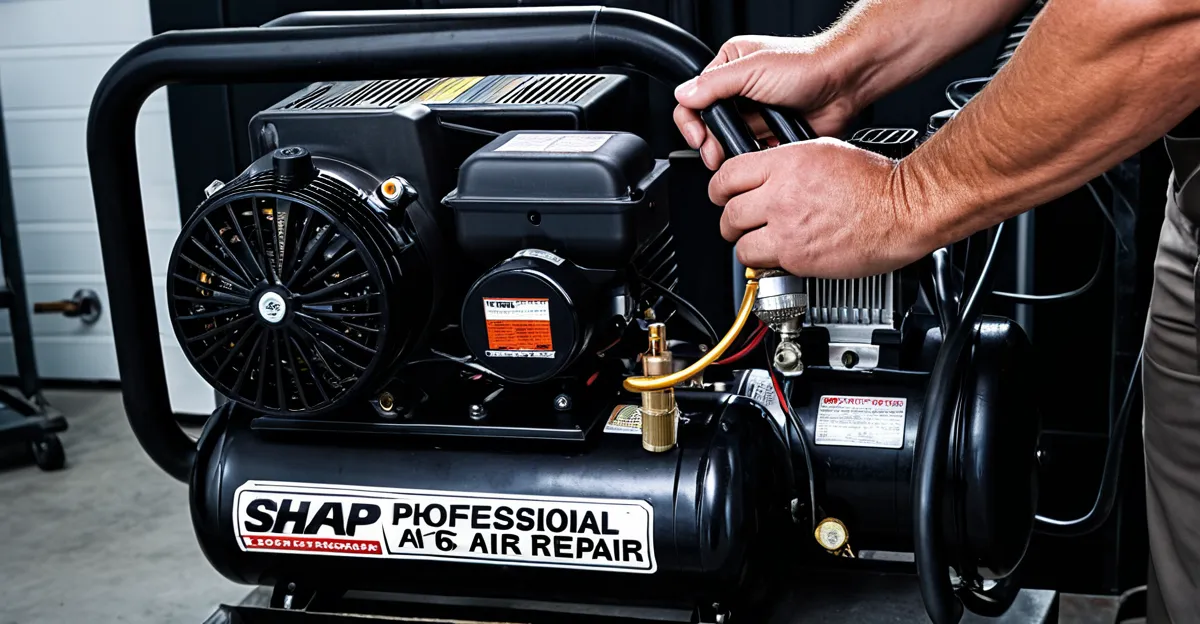Air compressor issues can halt your operations and lead to costly delays. Identifying common problems like pressure loss, unusual noises, or overheating quickly helps minimize downtime. Whether you need DIY fixes or professional support, understanding key repairs keeps your compressor running smoothly and production on track.
Immediate Steps for Air Compressor Diagnosis and Quick Repair
After identifying a malfunction, users should promptly utilize a systematic checklist to assess failure to start, pressure loss, leaks, or overheating. Through the Air Compressor Repair Service, essential troubleshooting protocols are readily available. Begin by checking power sources, switches, and breakers for startup failures. For pressure loss, inspect intake and pressure valves or detect leaks by applying a soap solution to connections and hoses. Promptly tighten or replace damaged couplers and check valves if bubbling or hissing sounds are observed.
Topic to read : Charming juliet balconies in cheddar: stylish designs for light
If overheating occurs, clean intake vents, remove obstructions, and ensure proper cooling by relocating the unit or replacing worn gaskets and valves. Always disconnect power before starting any DIY repairs and wear protective gloves and eyewear. Use only manufacturer-recommended tools and replacement parts.
Recognize limitations—complex issues like loud internal noises or persistent oily air require professional assessment. In these scenarios, contacting an emergency engineer helps avoid extended business interruptions. Prioritize safety at every step to protect both the equipment and operator, ensuring restored performance with minimal downtime.
Additional reading : How Can UK Homeowners Increase Their Property’s Value in 2023?
Common Air Compressor Problems and Targeted Solutions
Failure to Build and Maintain Pressure: Causes and Effective Repairs
Loss of pressure often results from faulty intake or pressure valves, worn piston seals, or a leaking tank check valve. To quickly identify the source, examine if the compressor cycles on but does not reach the desired gauge pressure. Inspect and clean or replace clogged filters, worn gaskets, and damaged seals. If air escapes from the pressure relief valve or check valve, a replacement is typically the best fix for restoring performance.
Addressing Unusual Noises, Vibrations, and Overheating
Unexpected noises and vibrations suggest loose bolts, misaligned pulleys, or deteriorated bearings. Tighten fasteners and align pulleys to reduce rattling. Persistent rumbling or whining indicates a need for bearing or crankcase repairs. Regular cleaning and ensuring proper ventilation will help prevent overheating. If airflow remains poor, check head gaskets and air intake, replacing parts as necessary.
Power and Electrical Fault Troubleshooting
Compressor startup issues commonly stem from faulty switches, worn cords, or tripped breakers. Confirm power supply integrity, switch functionality, and breaker settings. Inspect for exposed wiring and damaged power cords; replace these components promptly to reduce downtime and maintain operational safety.
Air and Oil Leaks: Detection, Root Causes, and Sealing Solutions
Detect leaks by listening for hissing or applying soapy water to suspect connections and hose ends. Frequent causes include loose couplers, worn gaskets, or compromised tank seals. Tighten fittings, swap out worn O-rings, and service the check valve as required. For oil leaks, focus on gasket and seal replacement, ensuring ongoing compressor reliability.
Professional Repair Services and Maintenance Best Practices
How expert technicians diagnose, repair, and prevent recurring compressor faults
Specialist air compressor repair services start with precise diagnosis of faults using proven procedures. Experienced technicians listen for abnormal noises, check for pressure inconsistencies, and inspect for leaks or overheating. For example, pressure issues typically mean examining intake valves, gaskets, or seals, while failure to start can lead experts to electrical faults or oil shortages. By detecting worn parts early—whether in pistons, bearings, or filters—repairs focus on restoring reliability, often before a breakdown halts production.
Technicians not only fix immediate issues but also address root causes to avoid repeat failures. Recommendations might include replacing filters, adjusting pressure switches, or improving ventilation. Preventive measures mean your air compressor avoids costly downtime and energy waste.
Overview of local repair providers and service plans
Several local air compressor service companies feature rapid response engineers and flexible service agreements. Some, like GTEC Group, prioritize one-visit fixes with well-stocked vans. Service plans range from pay-as-needed, to annual agreements—including parts and labor—or emergency call-outs for urgent repairs. Many providers utilize manufacturer-trained staff, ensuring all brands and models can be handled effectively.
Scheduling, budgeting, and tracking maintenance
Professional service providers rely on dedicated software to produce maintenance logs, document servicing dates, and flag upcoming intervals. This systematic approach helps companies schedule checkups, forecast part replacements, and allocate repair budgets in advance. Routine checks and carefully logged intervals ultimately support reliable daily operation and long-term compressor health.
Advanced Tips: Replacement Parts, System Upgrades, and Long-Term Compressor Reliability
Selecting and Sourcing OEM Versus Third-Party Parts for Cost-Effective Repairs
Precision: OEM parts maintain performance and equipment reliability, while third-party options can reduce costs. Select OEM components—especially for critical items like gaskets, valves, or filters—when maintaining warranty or ensuring long-term compatibility matters most. For less sensitive repairs, third-party parts vetted for quality are budget-friendly alternatives. Source from trusted suppliers familiar with your compressor make to avoid mismatches or premature wear, and always cross-reference part numbers before purchase.
Essential Upgrades for Improved Air Quality, Efficiency, and Lifespan
Upgrades such as advanced air filters, robust separator elements, and variable speed drive kits directly improve efficiency and reduce contamination risk. Regularly changing intake filters and upgrading to high-efficiency elements can prevent energy wastage and equipment wear. Modern lubricants tailored to your compressor type preserve internal components and cut operating temperatures—important for rotary screw and piston models.
Proactive Fault Prevention: System Monitoring, Daily Checks, and Digital Scheduling Tools
Daily inspections for oil levels, electrical connections, and abnormal vibrations catch faults early. Integrated digital tools streamline maintenance schedules and maintain detailed service logs, maximising operational lifespan. Continuous monitoring and prompt minor servicing ensure minimal downtime and consistent air delivery, supporting both production needs and budget control.











